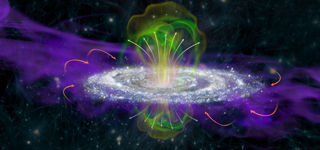Technical Development - Completed March 2016
Next Generation UV Instrument Technologies
Final Report
Chris Martin (Caltech)
Campus PI

Shouleh Nikzad (JPL)
JPL PI
Program Participants:
- Patrick Morrissey (Caltech co-Investigator)
- David Schiminovich (Columbia University co-PI)
- JPL Team: April Jewell, Chaz Shapiro, Sam Chang, Tim Goodsall, Todd Jones, Michael Hoenk
- Caltech Team: Matt Matuszewski, Don Neill, Marty Crabill
- Columbia Team: Michele Lemon, Hwei Ru Ong, Sam Gordon
- Nicole Linger (Caltech graduate student)
- Jose Zorilla (Columbia graduate student)
- Erika Hamden, Caltech Postdoc (formally Columbia graduate student, now independently funded by NSF AAPF and Millikan Prize)
- Gillian Kyne, Caltech Postdoc
Goal of Program
Our objective is the development of high-efficiency, low-noise photon-counting UV CCD detectors. This is accomplished via delta-doping and anti-reflection coating (ARC) developed at JPL, with testing at JPL and Columbia, combined with low noise electron multiplying charge-coupled device (EMCCD) technology, tested extensively at Caltech. This development work has resulted in detectors with low noise, low dark current, high UV efficiency, and high quality surface cosmetics.
Key Areas of Accomplishment
Our technical development program has directly led to advancement in several key areas:
- Successful delta-doping of large area array e2v EMCCD CCD201-20 (JPL)
- Successful multi-layer AR coatings, including single, 3-, and 5-layer AR coating development (JPL and Columbia)
- Successful integration of 5-layer AR coating and delta-doped e2v EMCCD; quantum efficiency (QE) tests from e2v (JPL)
- Successful demonstration of end-to-end wafer-level EMCCD processing for far ultraviolet with co-support from SAT (JPL)
- Extensive testing of engineer-grade e2v EMCCD ccd201-20 (Caltech)
- Ongoing testing of noise performance of delta-doped AR coated EMCCDs (Caltech)
- Sky testing at Palomar (Caltech and JPL)
Each advancement listed above represents a crucial requirement on the path to achieving flightqualified high efficiency UV-optimized EMCCDs. The development work at JPL has resulted in robust, reliable devices with good cosmetics, HV clock responses, and excellent UV performance. The testing at Columbia, in collaboration with Caltech, has yielded high-quality ARC and helped to optimize atomic layer deposition (ALD) of coatings. Noise testing at Caltech includes the lowest measurements of dark current yet, with additional improvement of waveform shaping through variable clocks. The end result is a detector which can achieve nearly all the flight requirements for the upcoming balloon flight of the Faint Intergalactic-medium Redshifted Emission Balloon (FIREBall, Sept. 2016), for future Medium explorers (MIDEX, Announcement of Opportunity (AO) in winter 2016), and for medium- and far-term missions likely to be recommended by the 2020 Decadal Survey.
